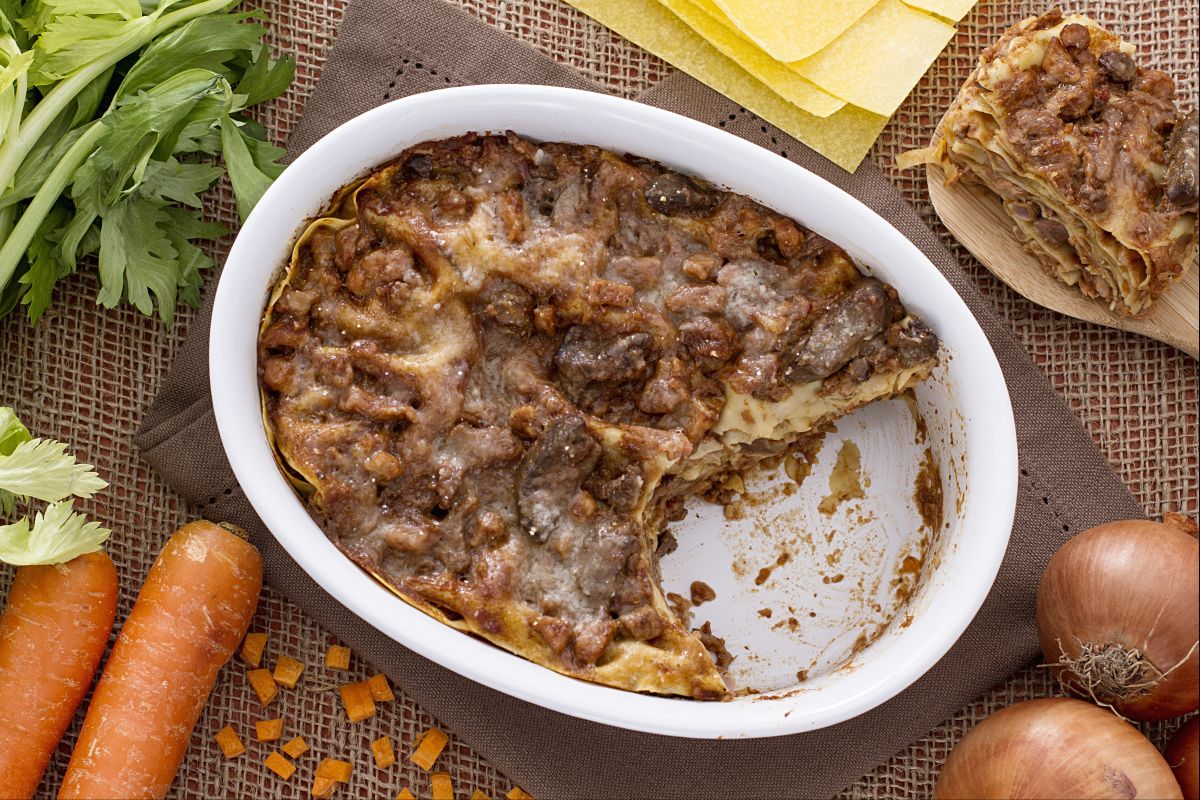Beneventan Lasagna
- Average
- 2 h 45 min

Vincisgrassi is a classic dish that really brings the Marche region’s food traditions to life. It's like a traditional Italian lasagna but a bit more rustic. And listen, it's packed with some surprising ingredients you won’t find in the usual versions. This isn’t your everyday baked pasta—no way—it’s tied to General Windisch Graetz and the defense of Ancona. What really sets it apart? The rich ragù, of course. It's not just beef or pork but a mix that often includes chicken livers, hearts, or even lungs, slow-cooked with pancetta. And you know what? That gives it this deep, savory taste that's both hearty and comforting.
The whole thing gets layered up with thin sheets of fresh pasta, a generous amount of grated Parmigiano, and sometimes a splash of Marsala wine in the dough for extra tenderness. Every bite feels so old-school. Honestly, you can almost picture families around the table, digging into a bubbling pan of this Vincisgrassi recipe. On Sundays or special occasions in Marche, people still bring out Vincisgrassi when they want to show off the best of Marche region cuisine.
There are lots of family twists—some folks add béchamel sauce for that extra creamy feel, while others stick with just the ragù and cheese. Pretty simple, letting the flavors shine. It's not unusual to hear about versions with rooster combs or more offal, a nod to how cooks used to make the most of what they had—like galantina di faraona. The top always bakes up golden and a little crispy, while the inside stays moist and packed with flavor.
Whether you call it Italian baked pasta or Vincisgrassi alla Maceratese, it’s one of those regional Italian dishes that feels like home. Sharing a pan of this is all about celebrating traditions and the kind of food that brings everyone together. Every forkful gives you a taste of something special from the heart of Italy. It's really really something. I mean, it captures the warmth and richness of Italian cooking, making it a cherished favorite. Seriously good.

To prepare the vincisgrassi, start by cutting the bacon into strips 1 and the various cuts of meat into small pieces: the pork 2, the beef, and finally the chicken giblets 3.

Finely chop the celery, carrot, and onion and put them in a saucepan to sauté for 5 minutes with some extra virgin olive oil along with the bacon 4. Let everything season for a few minutes, then add the beef and pork 5 and let it cook for about ten minutes until the meat turns brown. Add the tomato puree and season with salt and pepper 6.

Add the chicken giblets to the sauce and stir with a wooden spoon 7; cover with a lid and let it cook for about an hour and a half, stirring occasionally and adding some broth if the ragù dries out 8. The ragù should be well cooked and thickened 9.

Once the ragù is ready, you can assemble the vincisgrassi in a high-edged baking dish: place a few tablespoons of sauce on the bottom, then line the pan with a first layer of lasagna (you can use ready-made or make it by hand by looking at Homemade pasta (sheets and shapes)), cover with a generous tablespoon of ragù and a tablespoon of grated Parmesan 10. Continue like this to form at least ten layers (a characteristic of vincisgrassi) and finish with a layer of ragù and a generous handful of Parmesan 11. Bake in a hot oven at 355°F (180°C) for 30 minutes and take them out as soon as a nice golden crust has formed on the surface 12. Serve your vincisgrassi immediately!